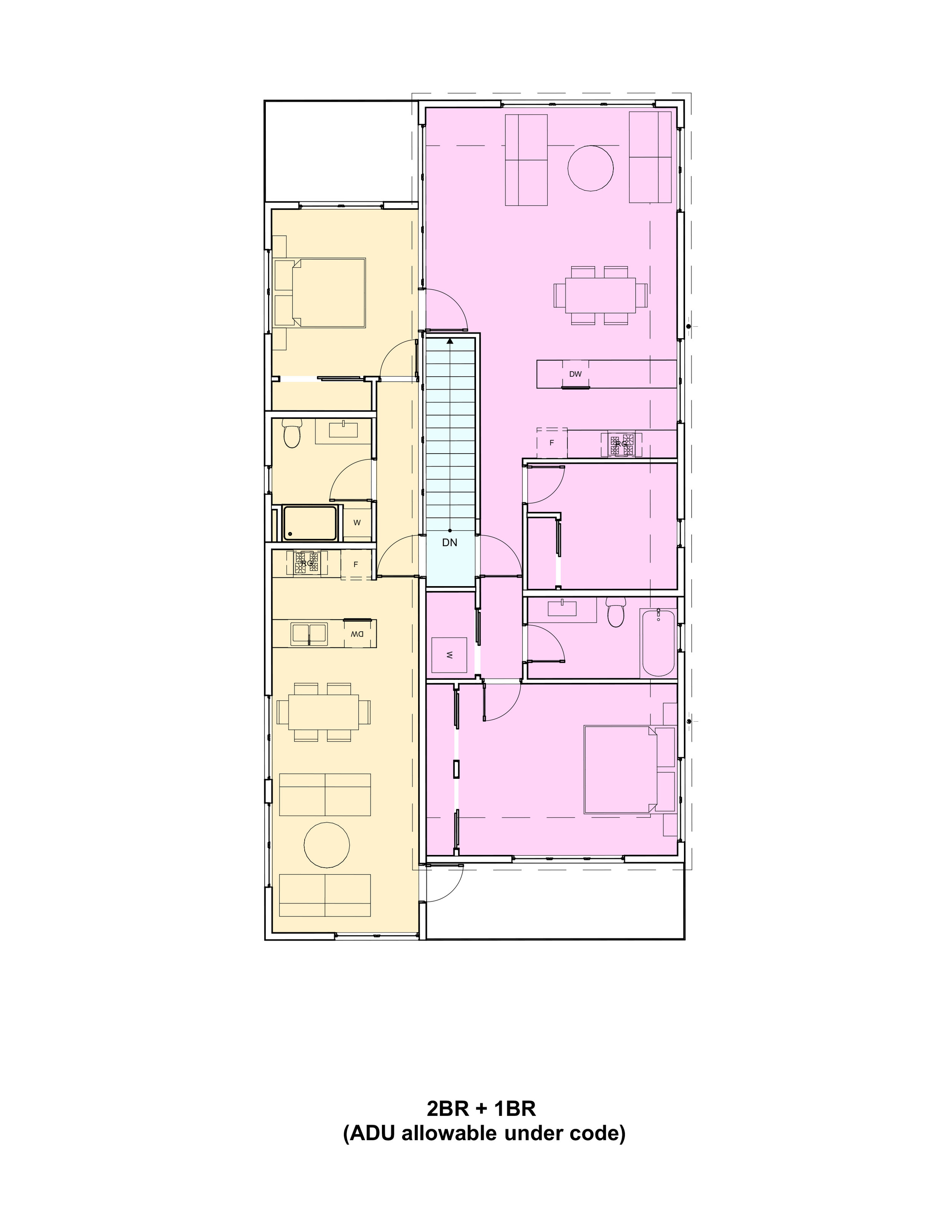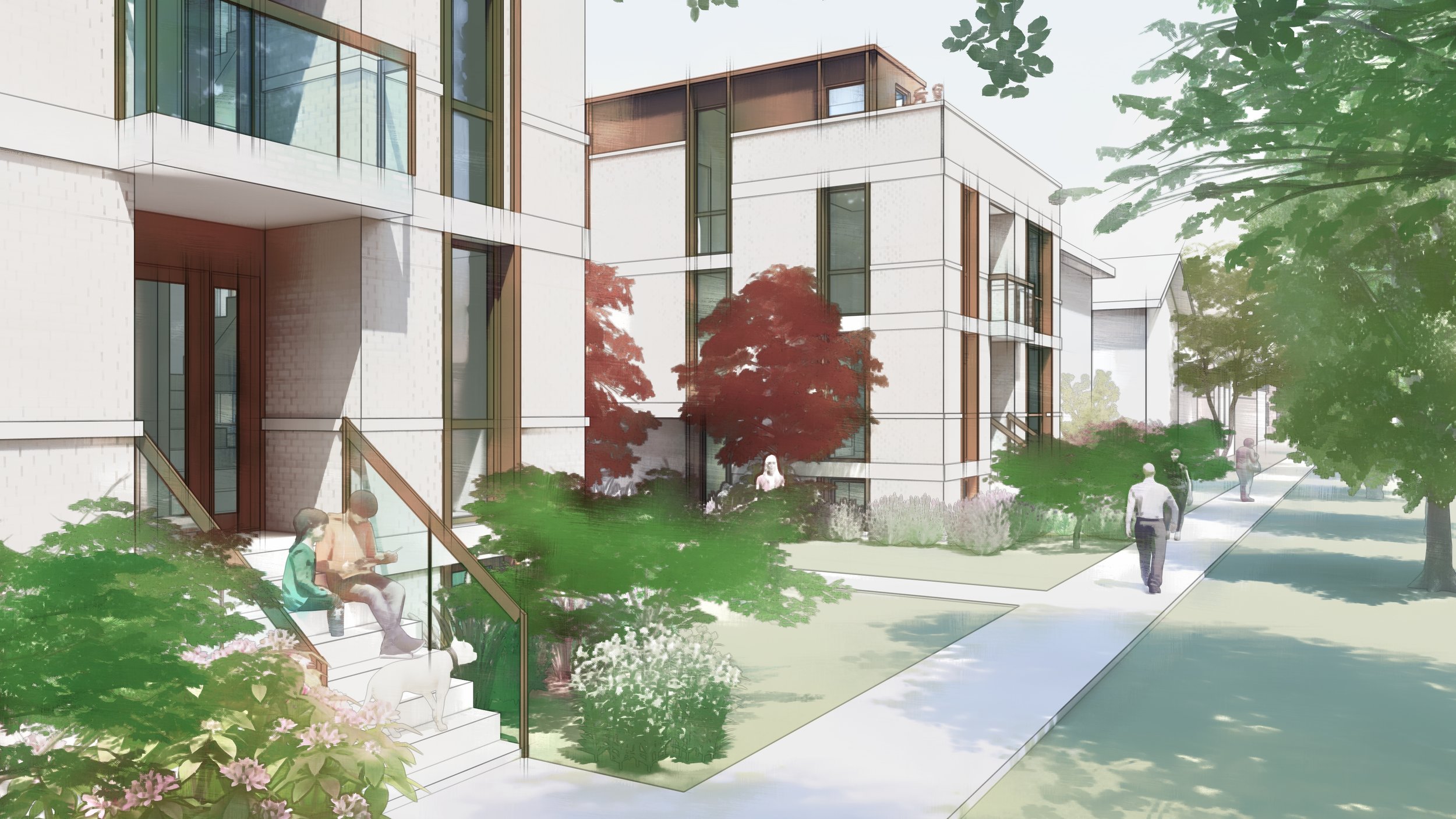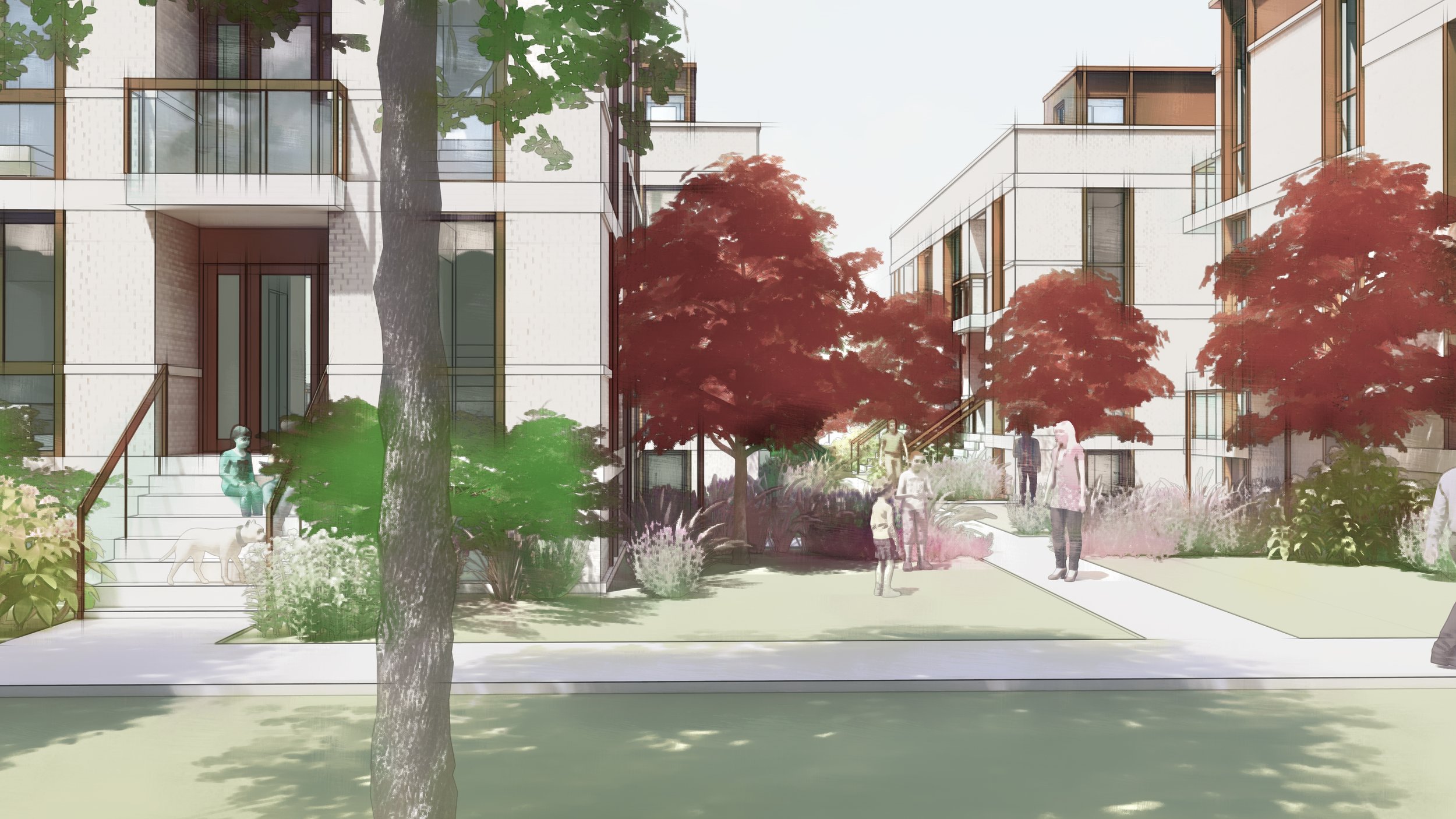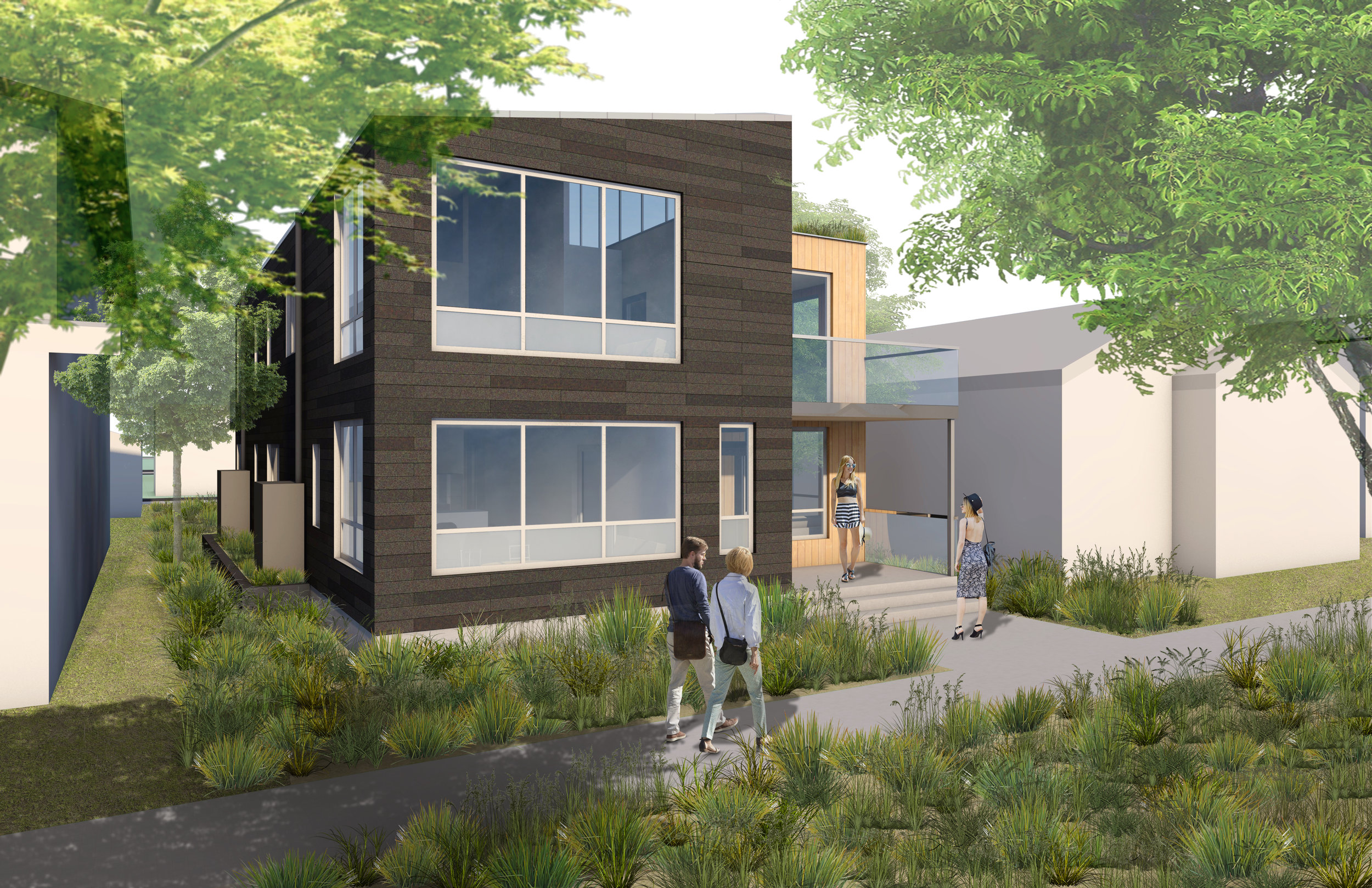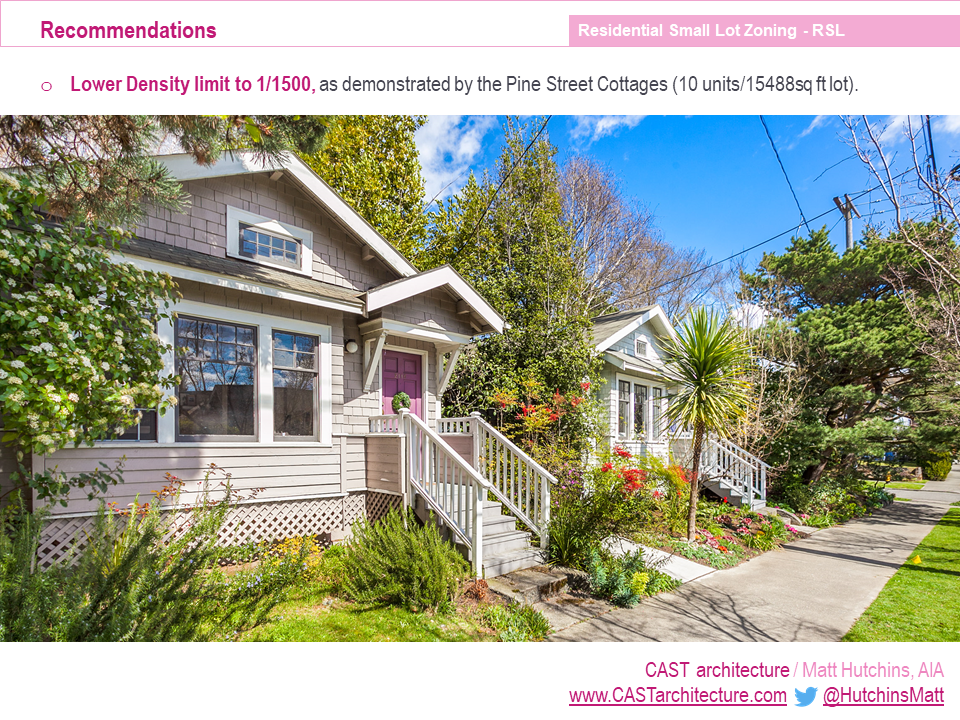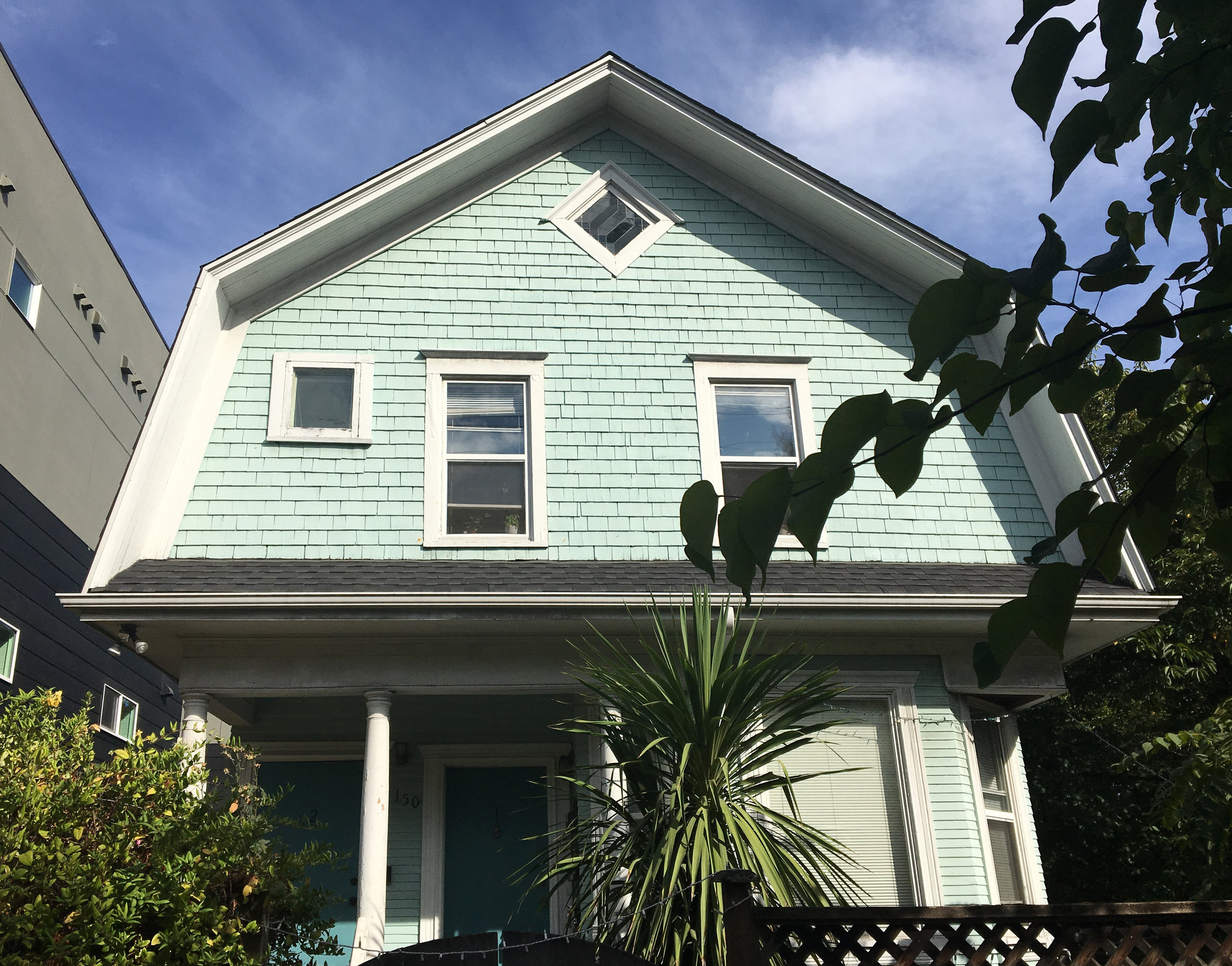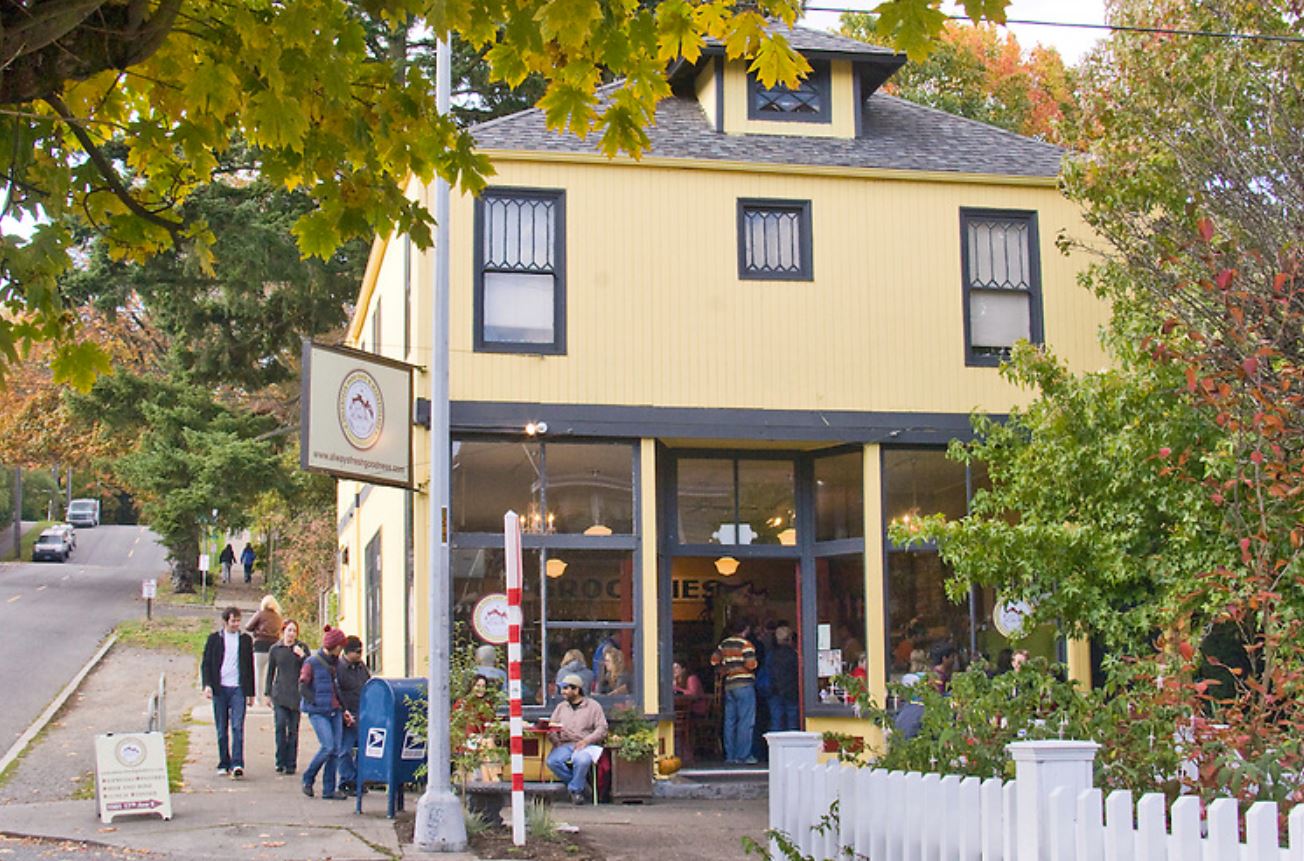Matt’s session at Built Green 2019 will walk through the zoning regulations for “Residential Small Lot,” demonstrate its benefits, and provide examples of what can be built. Additionally, this session will address how Mandatory Housing Affordability applies to those zoning regulations and ultimately how our neighborhoods will evolve.
In Seattle thousands of residential lots are now ‘Residential Small Lot’ (RSL) as part of the MHA zoning reform. The rules covering RSL have been rewritten, bringing questions about how RSL will affect Seattle neighborhoods.
First, what is RSL and what kinds of new development are we likely to see?
Second, how does RSL address displacement, affordability, density or sustainability?
If you live in one of the affected urban villages or are interested in innovative infill housing RSVP below to join Matt Hutchins, AIA for monthly informational talks in a neighborhood near you. All engagements are from 5:00 - 6:30pm.
September 25, 2019 Columbia City Library
October 16, 2019 West Seattle Library
November 12, 2019 Douglass-Truth Library (Central District)
Download it here: New Housing Options in Residential Small Lot (RSL) zone.
Residential Small Lot will allow little stacked flats like this. How you use them is up to you!
If you are thinking about downsizing but don’t want to relocate to a new neighborhood, or to a tiny impersonal apartment in a big boxy building, there are very few choices out there.
Luckily, with Seattle’s Residential Small Lot Zoning (RSL), there are some fresh options. CAST architecture has been working with the land use code for about a year, and now that it is approved in many Seattle Urban Villages and Hubs like Crown Hill, West Seattle, Morgan Junction, and Roosevelt, we want to show off some of the possibilities to do density right!
We often lament that there are essentially very few single level living situations that aren’t little condos, and even fewer that have been built this century.
With this ‘Double Up’ Duplex, there are two primary residences, one at ground level, one up. Each primary residence can be configured with an Accessory Dwelling unit. At 2200 square feet per level Including the ADU), that could be a generous home with a built in rental stream. If someone wanted to develop the whole building, it would be perfectly legal to own the entire building, rent one level, and the ADU adjacent. Don’t want to be a landlord? It can be configured as a condo association.
Downsized, accessible, modern, super energy efficient living, with two revenue streams, not to mention a great front porch and big backyard!
On any RSL lot, we can design a two unit flat with accessory dwellings units.
Here is a second story plan, with a primary and accessory unit. could easily be a 3br and studio apartment
We’re excited about what is possible under Residential Small Lot and hope that the best solutions get adopted far and wide!
Residential Small Lot zoning will create new housing options in established urban village neighborhoods
Mandatory Housing Affordability passed City Council yesterday, and as part of that, about 7000 urban Single Family lots will now be able to have two or three primary residences (plus ADUs) on site. I’m pleased that we were able to suggest some amendments that will make the zone more workable, improve flexibility for sites where people would like to preserve the original house.
What is RSL?
In a nutshell:
1 primary residence per 2000 sq ft of lot (one ADU per primary residence allowed)
if your lot is smaller than 4000 sq ft, you could still do two residences.
Floor Area Ratio : .75
Lot coverage: 50%
Maximum size of any single primary residence: 2200sq ft.
Residential Small Lot Streetscape
While conceived as a kind of new ‘cottage’ zoning, it is better suited to compact 2 1/2 story urban houses.
We’ve come up with a prototypical design which maxes out all the limits, and it still feels pretty good within the existing streetscape. It is a 1500 sq ft upper unit, with main level suite, and open living/dining/kitchen (w/ twelve foot ceilings), two typical bedrooms and a second master on level two, with a patio/kitchen garden on the roof. In the basement (half below grade to avoid being counted toward F.A.R.) we’ve designed a 1 bedroom/1 bath Accessory Dwelling Unit, which could easily be integrated into the primary house, set up to generate revenue to help with the mortgage, or be co-owned like a two party condo association.
Because it is a relatively compact volume, with flexibility about solar orientation for a range of urban sites, hopefully we’ll get some owners interested in pursuing Passive House green building standards!
Residential Small Lot zoning: Courtyard bungalows
There is a real opportunity, once you start combining lots, to also aggregate the open space, and get back to that Courtyard Bungalow type that we used to build before zoning made them by and large illegal. Since parking isn’t going to be required for most, the market is going to dictate, but hopefully we’ll be spared a lot of impervious area creating more run off issues.
What is the RSL market and will any of it be affordable?
While I’m pretty excited about the eventual potential of this zone, there are very few neighborhoods where this is going to pencil (i.e. high priced, high demand markets).
1) it is happening where land values are going to be the highest (urban villages), but with the low density limits, land costs cannot be spread across more than 2 or 3 units for the most part—at minimum $300K of any newly developed unit is going to be for land value.
2) With low densities, it will be nearly impossible to provide new rent restricted housing on site. Nearly all development will pay the MHA fee (up to $45,650 per unit). With the ‘downzones’ to RSL that Council enacted with the late amendments taking many Lowrise areas a step back, it ensures than most of those areas will never see rent-restricted housing.
3) Similar to Vancouver’s market where the high cost of detached housing is tempered by ‘mortgage helpers’ like Laneway houses, ADUs are really the only new less expensive option, and that is purely because of the size of those units.
Seattle is going to change thousands of residential lots from ‘Single Family’ to ‘Residential Small Lot’ (RSL) as part of the MHA zoning reform. The rules covering RSL have been totally rewritten and there are many questions about how it will affect our neighborhoods such as Crown Hill, West Seattle, and South Park
First, what is RSL and what kinds of new development are we likely to see?
Second, how does RSL address displacement, affordability, density or sustainability?
If you live in one of the affected urban village or are interested in innovative infill housing, join Matt Hutchins, AIA for this informational talk.
RSVP here:
6 Courtyard townhouses on a 12,000 sf ft lot
Seattle is going to change thousands of residential lots from ‘Single Family’ to ‘Residential Small Lot’ (RSL) as part of the MHA zoning reform. The rules covering RSL have been totally rewritten and there are many questions about how it will affect our neighborhoods such as Crown Hill, West Seattle, and South Park
What is RSL?
Where is RSL?
What are the rules governing the density, size, etc?
How is MHA going to factor into development?
What is the difference between a backyard cottage and a second house?
What are some of the prototypical developments that are possible under the new code?
If you live in one of the affected urban village or are interested in innovative infill housing, join Matt Hutchins, AIA for this informational talk.
RSVP here:
RSLZ will allow courtyard walk-ups!
Seattle is going to change thousands of residential lots from ‘Single Family’ to ‘Residential Small Lot’ (RSL) as part of the MHA zoning reform. The rules covering RSL have been totally rewritten and there are many questions about how it will affect our neighborhoods such as Columbia City and Rainier Beach.
First, what is RSL and what kinds of new development are we likely to see?
Second, how does RSL address displacement, affordability, density or sustainability?
Finally, how can we improve RSL so that it can be the most effective before the ordinance comes before Council?
If you live in an urban village or are interested in innovative infill housing, join Matt Hutchins, AIA for this informational talk.
RSVP here:
https://www.eventbrite.com/e/envisioning-seattles-small-lot-zoning-future-tickets-52921269943
Seattle is going to change thousands of residential lots from ‘Single Family’ to ‘Residential Small Lot’ (RSL) as part of the MHA zoning reform. The rules covering RSL have been totally rewritten and there are many questions about how it will affect our neighborhoods such as Columbia City and Rainier Beach.
First, what is RSL and what kinds of new development are we likely to see?
Second, how does RSL address displacement, affordability, density or sustainability?
Finally, how can we improve RSL so that it can be the most effective before the ordinance comes before Council?
If you live in an urban village or are interested in innovative infill housing, join Matt Hutchins, AIA for this informational talk.
RSVP here:
https://www.eventbrite.com/e/envisioning-seattles-residential-small-lot-future-tickets-52921293012
Seattle is going to change thousands of residential lots from ‘Single Family’ to ‘Residential Small Lot’ (RSL) as part of the MHA zoning reform. The rules covering RSL have been totally rewritten and there are many questions about how it will affect our neighborhoods, including most of South Park.
First, what is RSL and what kinds of new development are we likely to see?
Second, how does RSL address displacement, affordability, density or sustainability?
Finally, how can we improve RSL so that it can be the most effective before the ordinance comes before Council?
If you live in an urban village or are interested in innovative infill housing, join Matt Hutchins, AIA for this informational talk: Follow the link below to RSVP. Thanks!
https://www.eventbrite.com/e/envisioning-seattles-residential-small-lot-future-tickets-51155568683
RSL Walk ups and cottage developments create a neighborhood within a neighborhood.
Seattle is facing a housing shortage, a climate crisis, and an increasingly inequitable city. Allowing more dwelling options, at various sizes and price points, is a great strategy to combat all three. Enter the Residential Small Lot Zone, Seattle’s attempt to add less expensive dwellings in dense, amenity rich urban centers without disrupting the historical fabric of single family detached houses.
As part of Mandatory Housing Affordability (MHA), Seattle is rezoning many of the Urban Village parcels currently zoned ‘Single Family’ to ‘Residential Small Lot‘ (RSL). RSL exists under the code right now, but is applied to only 7 acres of zoned land in Seattle and has narrowly defined housing types and restrictions that have kept it from wider acceptance. Under MHA, RSL will be expanded to 768 acres and include about 6200 Single Family Lots. The proposed code has been rewritten from the ground up, so let’s dig in and see what it is likely to produce for Seattle’s neighborhoods.
Function
Reading the definition of RSL, it is hard not to feel sorry for this hard working zone.
It has to be a little of everything to everyone. It is uncommon for a zone description to get into issues of affordability, children, and the desires of its residents. We don't expect the description of General Industrial 2 (IG2) to make judgments about dockworkers’ life choices. Or Downtown Office Core-1 (DOC-1) to wonder about whether people in Downtown Office Core 2 (DOC-2 ) feel development there is appropriate.
Nevertheless, it exposes a question. What is the mission of RSL? Is it a transition between Residential zones? Is it meant to capitalize on the proximity to urban centers by putting residents close to amenities, jobs and transit? Is it fighting displacement, or fostering density? What need does it serve, and what is the positive vision of that zone? Right now, it is formulated with a little of everything, including some new stuff, and takes elements from single family, multi family, bridges residential and building code with a dash of high minded mission to address family housing and affordability. It is a little like this:
RSL. Not elegant, but adapted to its environment.
The Nitty Gritty: What does it look like on paper?
What does RSL look like?
Before RSL zone, this Single family zoned street has 28 dwellings.
And again, after a generation of development doubles the number of dwellings:
57 dwellings on the street, double the current density, but not much change at street level.
Prototypes for RSL Zoning
We've taken the liberty to suggest some prototypes, based on traditional 'missing middle' multifamily, optimized for this zoning.
Bungalow Court (or the Walk Up Model)
For lots greater than 11,699 sq.ft, this bungalow court has (6) 3BR 1466 sq.ft. primary units, and (6) 733 sq.ft. 1 or 2BR ADUs. This walk up is really a module that can be arranged into twos, threes, any grouping based on density limitations.
Double Up Duplex
Our idea is for a stacked duplex, 1500 sq.ft. configured for an ADU, optimized for the allowable FAR on a minimum 4000 sq.ft. lot. We'd target Passivhaus green building standard, integrate green roof, pv, and rainwater catchment.
Alternative configurations for ADUs, or future co-housing options.
Recommendations for code tweaks!
Here are fourteen ways we can improve the Seattle’s MHA’s totally rewritten Residential Small Lot zone, BEFORE it goes into effect:
1.Exempt RSL from MHA fees. New dwellings created in the RSL zone will be subject to MHA, but will anyone built a rent restricted house? No. Therefore, fees due at permit issuance could be as high as $45,650. It will have a dampening effect on any homeowner looking to build a second house on the back of their lot. Many of those homeowners will build an ADU instead (not subject to MHA fee), eliminating the upside of more smaller homes in the marketplace.
2. Allow ADUs to function as MHA performance! MHA performance is 50% for lots under 5699 sq. ft.. Meanwhile ADUs are by definition limited to a smaller size, and making them affordable would be closer in spirit to the original intent of the ordinance.
3. Eliminate new Maximum Net Unit Area limit. Maximum Net Unit Area is a new, unique limitation that only applies to this zone, and nowhere else. It is Floor Area per Unit, and it is often in conflict with the Floor Area Ratio (FAR) for the parcel. There are no MNUA exceptions for existing houses or additions, meaning many of Seattle’s classic bungalows in RSL zones will suddenly become non-conforming, unable to do a ‘bump out’ or even a SECOND story addition. Because basements count toward MNUA, but not FAR, expect a lot of new buildings with basements apartments.
A basic RSL block reveals surprising inflexibility unless you want to add a second dwelling
The owners could only do a 230 sq. ft. addition. Not a second story. They could however build a new dwelling behind it up to 2200 sq. ft.
4. Start FAR at 1, give .25 bonus for more dwellings. The FAR is .75, lower than any Low Rise zone, and effectively lower than Single Family zoning (only governed by height and lot coverage). If RSL is meant as a transition between multifamily and single family, it is more restrictive that both.
5. Lower the density ratio to 1 to 1500. Fourteen percent of the newly minted RSL lots will not even support a second dwelling. Why go through this process then wipe the development capacity of 900 lots off the table? Rounding up for density at 1.85 * 2000SF means any lot under 3699SF is still a single family lot, but MNUA effectively limits all dwellings to an FAR as low as of .59.
6. Allow more than one Accessory Dwelling Unit (ADU). All these lots are in urban centers, where we are planning to put almost all our growing population. Many lots or owners aren’t going to want to built a full second dwelling. Meanwhile, SFZ will soon allow two ADUs per primary residence. This flexibility will preserve many existing houses, and provide homes for new residents right in the urban villages.
7. Exclude ADUs from MNUA. An accessory dwelling unit counts against the MNUA, meaning many average houses wouldn’t be able to build a cottage without sacrificing square footage in the primary house.
8. Resist the urge to Design Standard. The two Design Standards for RSL are ridiculous. Different color walkways to the house in back? Why? We don’t expect such ham fisted wayfinding in multifamily zones where there’s likely more front doors. One of the great strengths of the proposed code is that it did away with the many of the restrictive types, like ‘tandem housing.’ Let’s not dilute it with well meaning micro management, only to find out that we’ve created a less than graceful solution (remember the platypus!).
9. Allow exceptions from MHA when preserving existing houses. Subdividing existing houses into multiple units will be penalized by the Design Standards, and be subject MHA fee, at the full price for the area of units. The MHA fee calculation is gloss floor area/total units X net increase of units. A 3000 sq ft house, converted into a triplex from single family, would pay MHA on 2000 sq ft as if new, or up to $41,000. That neither incentivizes preservation or the creation of more affordable housing.
This is a triplex. Converting it under the MHA regime would cost tens of thousands of dollars in MHA fees in addition to the requirements of retrofitting.
10.Take out limit on number of apartments. The stigma of apartment living results in one of the most efficient (and revered) forms being outlawed. The code is clear: RSL outright outlaws more than three apartments regardless of lot size. No cute Capitol Hill fourplexes.
This fourplex is not allowed under the new RSL zone.
11. Eliminate owner occupancy requirements. We don’t require owners to live on site in other multifamily zones, owner occupancy requirements will severely limit the number of accessory dwelling units and they reinforce a fundamentally class based stigma against renters.
12. Change all residential zones to ‘Residential’. We now have three titles for zones where residences are the only use; Single Family, Lowrise, Residential Small Lot. While RSL is being treated as a unique bridge between SFZ and LRZ, it should be part of a continuum of dwelling per square foot. Streamline!
13. Amend Seattle Residential Code to cover up to four apartments. Building codes switch to the more demanding SBC for anything more dense than a duplex and ADUs are considered as such. When buildings should be getting more efficient, like stacking a third apartment on top of a double decker, there is a quantum leap in construction cost, driven by code compliance.
14. Allow Live Work and Corner stores. In midrise zones, having residential suites at the street level seems forced. Two blocks from the center of an urban village, having an office space legible from the street makes total sense. Allowing corner stores would expand the walkshed so more people will walk to pick something up, rather than drive to a supermarket.
Neighborhood institutions start with entrepreneurial neighbors. Give them a place.








